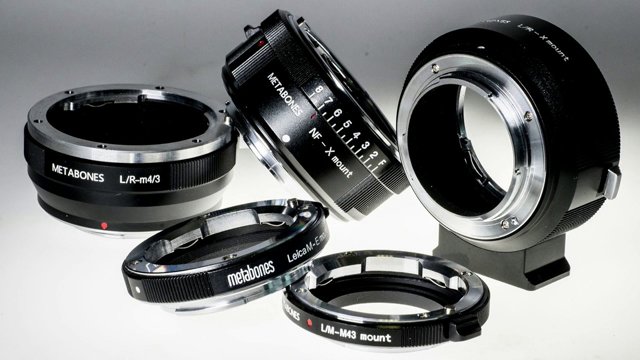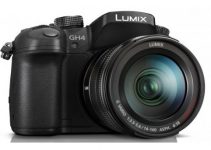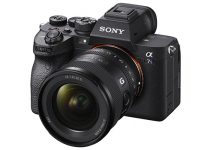Without a double the Metabones Speed booster and Smart adapters have been the most popular adapters for video shooters in the last few years. Their optical and build quality is outstanding, and although they do cost a few pennies, in my experience with the Smart Adapter Mark IV (EF to E) it has been well worth it. The success of the Metabones optical adapters have spawned a whole new range of similar, but more budget products from various Asian manufacturers, but most of them have not been able to match the quality of the Metabones adapters. Extremely popular with Sony A7s II, FS7 and FS5 shooters who have a ton of Canon EF lenses, Metabones just released a major firmware update 2.3, which adds Native AF support as well as Smooth Iris to their range of EF mount Speed boosters.

Metabones has already added fast EF lens autofocus to its Micro Four Thirds Mount Speed Boosters and Smart Adapters last year. With this speedy advantage now extended to E-Mount, EF-Mount lenses are now capable of focusing quickly across the widest variety of mirrorless cameras with trusted Metabones precision and reliability.
The smooth iris feature slows down the movement of the electromagnetic aperture diaphragm so that video footage transitions smoothly when the aperture changes, with reduced tick noise from the lens. The latest Canon and Tamron SP lenses have special support for this feature and Metabones makes use of it if the lens supports it.
Metabones Firmware 2.3 Additional Features
- Eye-AF (Sony a6300/A7 series).
- Fast contrast detect AF for all E-Mount cameras.
- DMF (direct manual focus) for E-Mount cameras, where the camera switches to MF as soon as AF completes. This is useful for checking AF accuracy when used with focus peaking.
- Smooth iris for Sony E-Mount and FZ-Mount cameras and Blackmagic Design, JVC and Panasonic Micro Four Thirds Mount cameras.
Important Limitations:
- E-Mount “native” autofocus features may not work with all lenses.
- “Native” autofocus may be lesser in performance and/or accuracy compared to the original “Green” mode phase-detect autofocus for A6300, Sony A7 Mark II and A7R Mark II.
- AF-C and video autofocus may have unsatisfactory AF performance and/or accuracy. This is a limitation inherent in DSLR lenses, which lack the low latency required for making many fine movements in rapid succession during AF-C and video focusing.
- Excessive hunting may occur if a small aperture is used with AF-C, video or “Live-view Display Setting Effect” turned on.
- The first few autofocus attempts may result in false positives where the camera gives focus confirmation but the subject is not in focus. This issue goes away on its own after a few trials with most lenses.
- No support for in-camera correction such as peripheral shading, CA and distortion.
- Power consumption may increase compared to the original “Green” mode autofocus. We recommend turning off the “Pre-AF” option to conserve battery power. On A7 series cameras and A6300 the option is on page 3 under the “gear” tab.
- Actuations of the electromagnetic aperture diaphragm and/or the focus motor of the lens result in noises which may be picked up by the camera’s internal microphone during video recording. Use of an appropriately placed external microphone is required for video work.
- The aperture moves in 1/3 stop steps with most Panasonic cameras and 1/8 stop steps with other cameras, which may be noticeable in video recordings. Programmed exposure mode and shutter priority exposure mode should not be used for video. Lenses supporting “smooth iris” smooth out the transition but do not increase iris resolution.
The following lenses have been tested for “Native” AF. Refer to Metabones’ web site for the most up-to-date list. Lenses equipped with smooth iris support are marked with asterisks. APS-C lenses are not compatible with Speed Booster®.
- Canon EF 8-15mm f/4L USM Fisheye*
- Canon EF-S 17-55mm f/2.8 IS USM
- Canon EF-S 18-55mm f/3.5-5.6 IS II*
- Canon EF 24-105mm f/4L IS USM
- Canon EF 28-80mm f/3.5-5.6 II
- Canon EF 40mm f/2.8 STM*
- Canon EF 50mm f/1.2L USM
- Canon EF 50mm f/1.4 USM
- Canon EF 70-200mm f/2.8L IS II USM*
- Canon EF 70-200mm f/4L USM (non-IS)
- Canon EF 70-300mm f/4-5.6L IS USM*
- Canon EF 85mm f/1.2L II USM
- Canon EF 100mm f/2.8L IS USM Macro*
- Canon EF 100-400mm f/4.5-5.6L IS USM (I)
- Canon EF 100-400mm f/4.5-5.6L IS II USM*
- Canon EF 200mm f/2.8L II USM
- Canon EF 300mm f/4L IS USM
- Sigma 18-35mm f/1.8 DC HSM Art 013
- Sigma 24-105mm f/4 DG OS HSM Art 013
- Sigma 50mm f/1.4 EX DG HSM
- Tamron SP 24-70mm f/2.8 Di VC USD A007
- Tamron SP 45mm f/1.8 Di VC USD F013*
- Tamron SP 70-200mm f/2.8 Di VC USD A009*
- Incompatible lenses: (“Green” mode PDAF is still supported on A6300, A7 Mark II and A7R Mark II.)
- Canon EF 50mm f/1.8 II
- Canon EF 100mm f/2.8 USM Macro
- Canon EF 135mm f/2L USM
- Contax N lenses modified to EF mount by Conurus Canada
- Sigma 18-125mm DC OS HSM
- Tamron SP 17-50mm f/2.8 Di II VC B005
- Tamron 28-300mm f/3.5-6.3 (IF) Macro A20
OSX and Windows versions of the firmware updater are available for download from Metabones’ web site. The same download updates Speed Booster ULTRA, Smart Adapter Mark IV, EF to FZ Mount Smart Adapter and all EF Mount to Micro Four Third mount products. Updates to earlier Smart Adapters (I, II and III) and the original Speed Booster are by factory only and are free of charge except for shipping.
[via SonyAlphaRumors / Source: Metabones]
Disclaimer: As an Amazon Associate partner and participant in B&H and Adorama Affiliate programmes, we earn a small comission from each purchase made through the affiliate links listed above at no additional cost to you.



